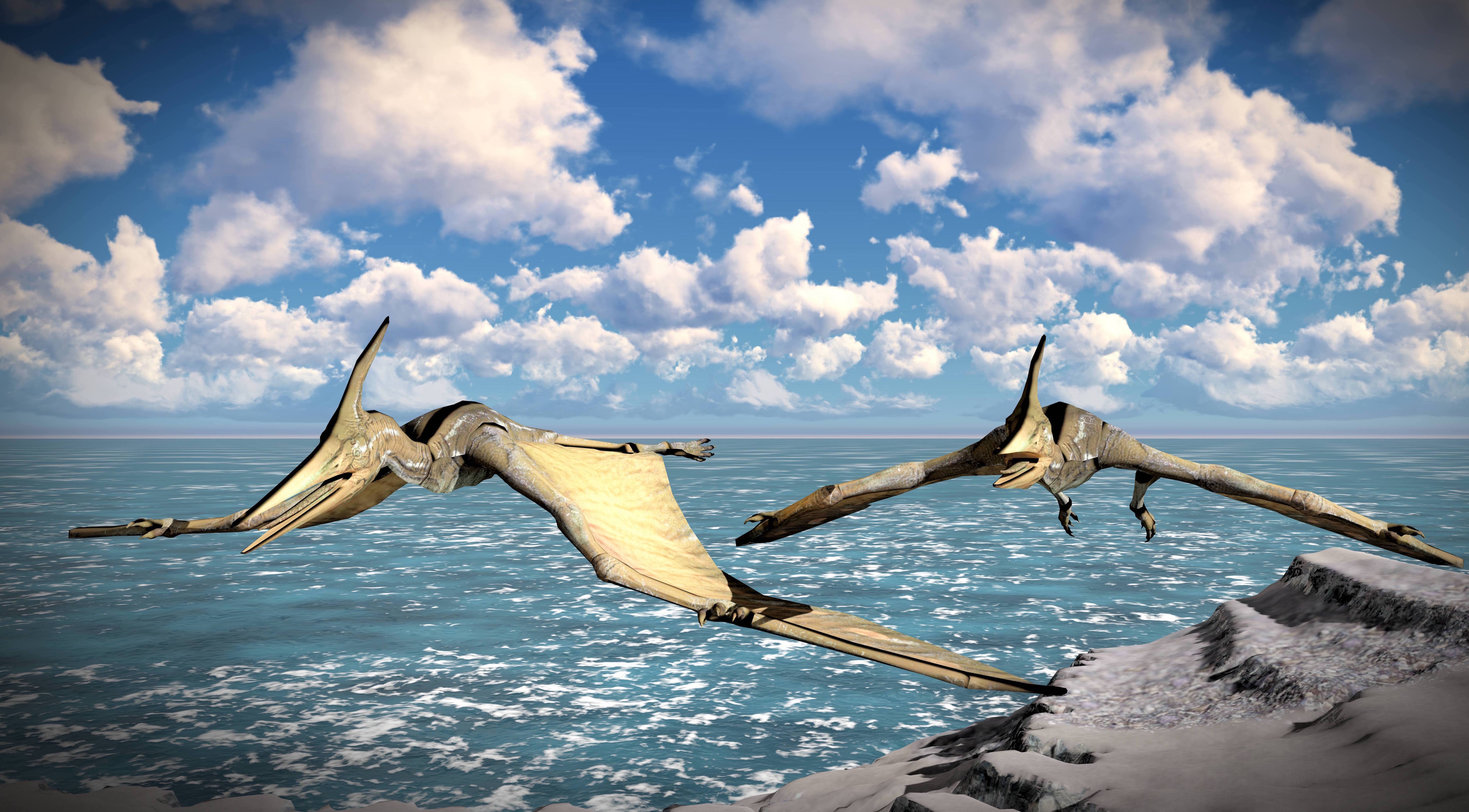
Pterodactyls did not fly like bats, new study finds
A new study has provided a more accurate picture of how pterodactyls really flew.
It turns out that previous hypotheses, artists renderings, and movies that pictured the winged dinosaurs flying like bats were all wrong.
The research emphasizes an important point about examining fossils and drawing conclusions about an animal’s movements based on its skeletal framework alone.
In the case of pterosaurs, it was long assumed that these dinosaurs flew like bats with their limbs splayed apart because they had wings that were supported by a fourth finger, just like bats.
However, researchers from Brown University conclude that this movement was likely impossible because of limitations with the pterodactyl’s ligaments, something not apparent from fossil evidence alone.
For the study, researchers took into account the soft tissues of pterosaurs, and to get a better idea of how the dinosaurs may have moved, they used a dead quail because birds are the closest living relative to pterosaurs.
The muscles were cut away from the quail’s hip joints and the researchers took X-ray videos while manipulating the joints. The range of motion for the quail was then mapped with the ligaments attached and the results showed that the ligaments greatly limited the bird’s movements.
To better explain the difference and show that the bat pose among pterosaurs was likely impossible, the researchers used a grocery store chicken as an example.
“If you pick up a raw chicken at the grocery store and move its joints, you’ll reach a point where you’ll hear a pop,” said Armita Manafzadeh, a co-author of the study. “That’s the ligaments snapping. But if I handed you a chicken skeleton without the ligaments, you might think that its joints could do all kinds of crazy things. So the question is, if you were to dig up a fossil chicken, how would you think its joints could move, and how wrong would you be?”
In order to achieve the bat pose while flying, the quail ligament would have to stretch 63 percent beyond its capabilities.
“That’s a huge difference that would need to be accounted for before it can be argued that a pterosaur or ‘four-winged dinosaur’s hip would be able to get into this bat-like pose,” said Manafzadeh.
The results show how important it is to consider soft tissues when modeling movements of fossils and long extinct species, and now future studies will be able to create a better picture of pterosaurs’ flight.
—
By Kay Vandette, Earth.com Staff Writer












